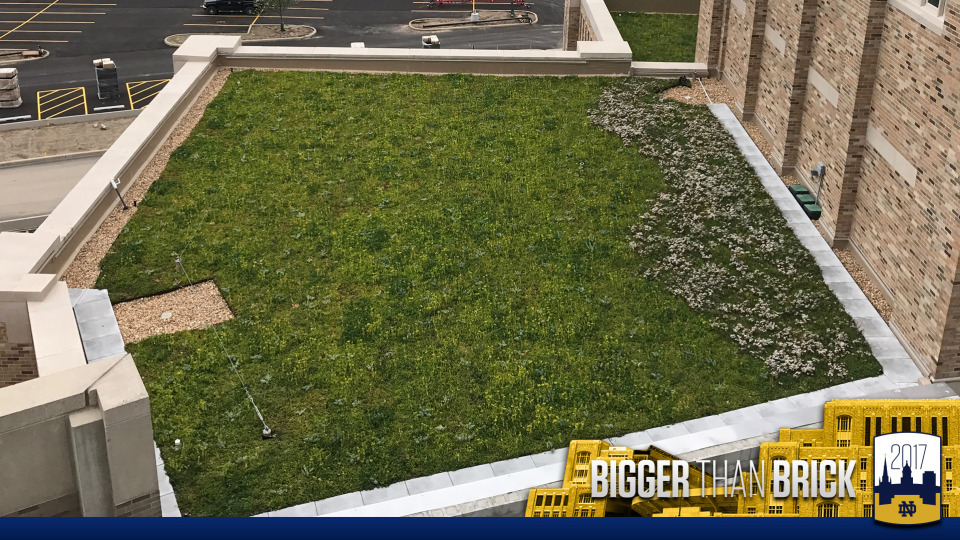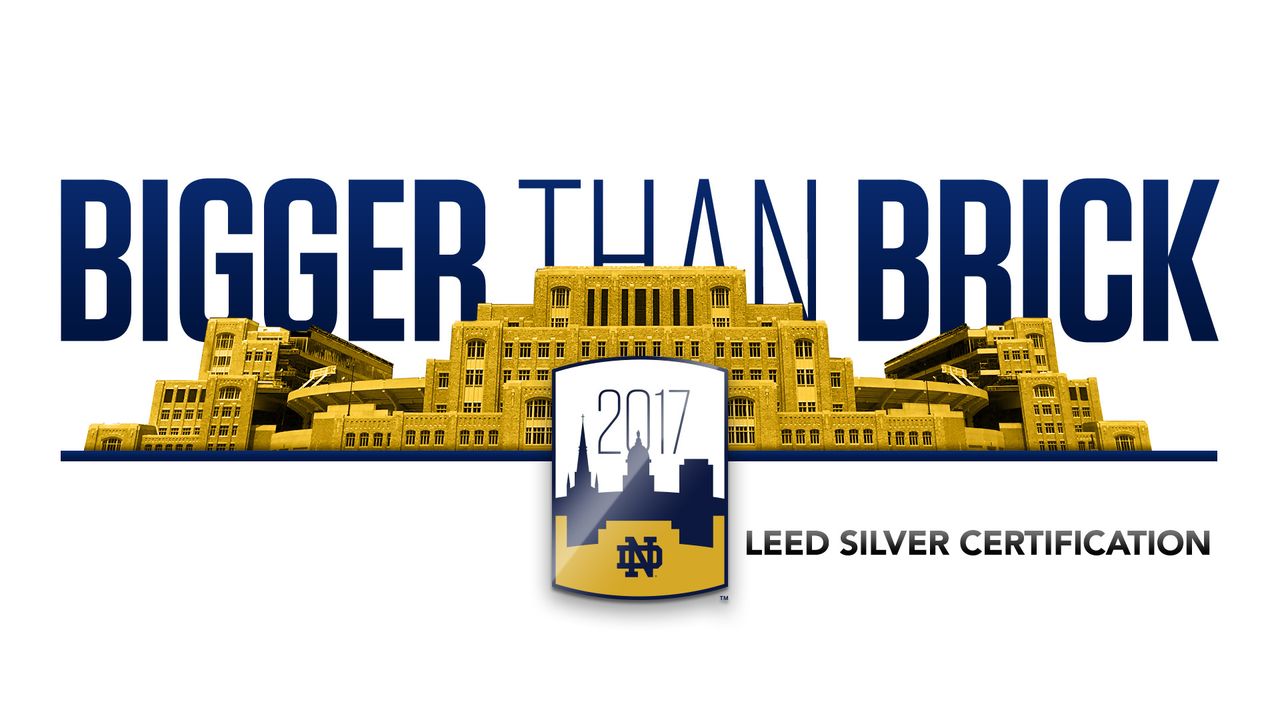July 28, 2017
Throughout the 2017 football season we will be giving you a behind the scenes look at the Campus Crossroads Project on social media – you can follow along with the #NDBiggerThanBrick hashtag. Why #NDBiggerThanBrick? Back in Notre Dame’s 1930 Alumnus magazine, it was stated “Notre Dame is bigger than brick and far more than mortar.”
By Marissa Gebhard
Duncan Student Center, O’Neill Hall, and Corbett Family Hall, each surrounding Notre Dame Stadium, were designed and constructed with the goal of seeking LEED Silver certification from the United States Green Building Council.
Throughout their construction and during their operation, Duncan Student Center, O’Neill Hall, and Corbett Family Hall will use resources sustainably. More than 20 percent of the construction materials were sourced locally, within 500 miles of the construction site, and over 75 percent of the construction waste was recycled including materials such as concrete, metals, and wood. Operating the new buildings will also be much more energy efficient. Occupancy sensors will work in tandem with heating and cooling systems and LED lighting, which is anticipated to reduce energy consumption by 30 to 50 percent compared to conventional lighting. Faucets and toilets will use 35 percent less water compared to conventional new construction.
The University architects, engineers, and planners also incorporated sustainable practices in Notre Dame Stadium, although it will not be part of the LEED certification process. New LED lighting installed last year in the stadium will reduce power consumption by 60 percent, and fans will notice how well the clean, white lights illuminate the playing field for evening games. The LED lights will also last much longer, up to 20 years. In addition, all of the replaced seating from the lower bowl has been repurposed. When fans visit the stadium this fall they will see how some of the historic wooden benches were beautifully woven into the theming of the walls of the Duncan Student Center and other spaces throughout the facility.

A living roof covering nearly all of the flat roof surfaces of the three facilities will reduce heating and cooling energy loads. The green roof, which will be the largest green roof in the state of Indiana, will provide insulation, mitigate storm water run-off, improve air quality, reduce noise, conserve rainwater and release it back into the atmosphere.
Fans will also have an opportunity to participate in the University’s sustainable efforts. Tailgaters will be able to conveniently recycle by using designated recycling bags and mobile recycling carts. In Notre Dame Stadium, fans will participate in single-stream recycling for all food and beverage containers. Through the efforts of Notre Dame Public Affairs and Levy Restaurants concessions, food waste in Notre Dame Stadium will be reduced by donating the food to area non-profit organizations. Low Emitting Vehicle priority parking spaces and 90 bicycle racks will promote efficient transportation.
The University of Notre Dame and the department of athletics are proud to welcome visitors to the new spaces and invite them to join in the efforts to make Notre Dame Stadium green.
? ND FACT
The old Notre Dame Stadium benches have been repurposed in the stadium & 3 adjoining buildings.#NDBiggerThanBrick pic.twitter.com/L0KVqYkyJL
— The Fighting Irish (@FightingIrish) July 23, 2017







